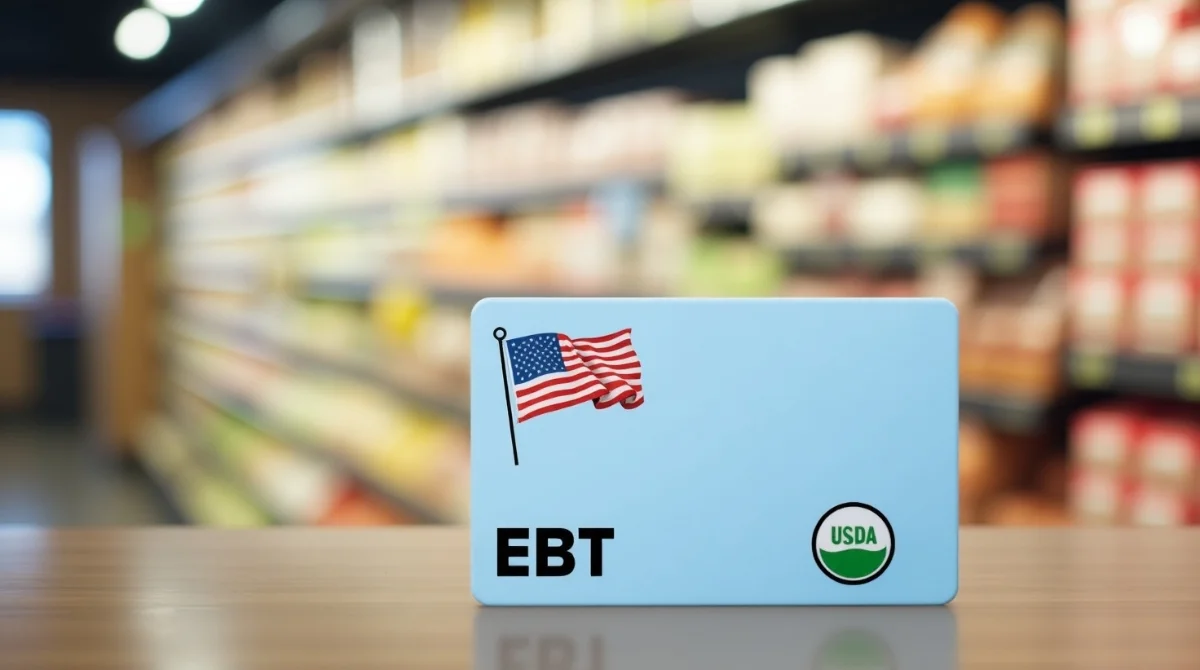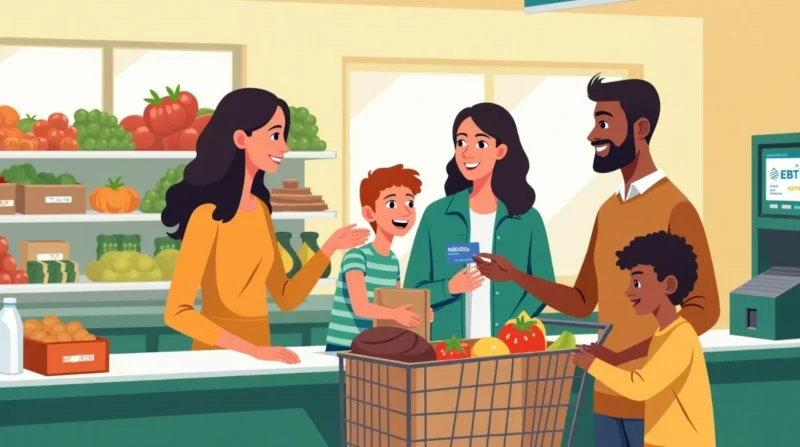Table of Contents
What Is SNAP?
SNAP provides monthly benefits to eligible individuals and families to purchase food. These benefits are distributed through an Electronic Benefits Transfer (EBT) card, which functions like a debit card and can be used at authorized grocery stores and farmers’ markets.
Who Is Eligible for SNAP?
The Supplemental Nutrition Assistance Program (SNAP), formerly known as food stamps, is designed to help low-income individuals and families afford nutritious food. Eligibility for SNAP depends on several factors, including income, household size, expenses, and citizenship status.
- Income Limits: To qualify, a household’s gross monthly income must generally be at or below 130% of the federal poverty level. Net income, after deductions like housing costs or childcare, is also considered.
- Household Size: The larger your household, the higher the income threshold. For example, a family of four can earn more than a single person and still be eligible.
- Citizenship and Residency: Applicants must be U.S. citizens or legal immigrants. Most able-bodied adults without dependents (ABAWDs) must meet additional work requirements to receive benefits.
- Resources: Certain assets, like cash or bank accounts, may be counted. However, homes, retirement savings, and vehicles are often exempt.
- Other Factors: People receiving other government benefits, such as Temporary Assistance for Needy Families (TANF) or Supplemental Security Income (SSI), may automatically qualify for SNAP.
If you think you might qualify, you can apply through your state’s SNAP office or online portal. A quick screening tool is also available to help estimate your eligibility.
How to Apply for SNAP?
Applying for SNAP (Supplemental Nutrition Assistance Program) is a straightforward process, but it’s important to follow each step carefully to ensure your application is completed correctly and on time. Here’s a detailed breakdown of what to expect when applying for SNAP benefits:
1. Locate Your State’s SNAP Office
SNAP is managed at the state level, so the process begins by identifying your local SNAP office. Each state has its own procedures, eligibility rules, and application methods. You’ll need to contact your specific state’s office to begin the process, either by phone or in person.
2. Complete an Application
Once you’ve contacted your state office, the next step is to complete a SNAP application. This form gathers detailed information about your household, including the number of people living with you, total household income, monthly expenses (such as rent, utilities, or medical bills), and any available resources like savings or assets. Depending on your state, you may be able to submit the application online, by mail, or directly at a local office.
3. Prepare for an Interview
After submitting your application, the state agency will schedule an interview. This is typically conducted by phone, but in some cases, it may take place in person at the SNAP office. The interview is an important part of the process—it allows a caseworker to verify the information you provided and ask any follow-up questions. Be prepared to show documentation such as pay stubs, rent receipts, utility bills, or identification for household members.
4. Receive a Decision
Once your interview is complete and all documents have been reviewed, the state agency will make a decision on your application. If you are approved, you’ll receive a notice that outlines your benefit amount and how long you are eligible to receive benefits. You’ll also receive an EBT (Electronic Benefit Transfer) card in the mail, which works like a debit card and can be used to purchase eligible food items at participating retailers.
The entire process may take a few weeks, so it’s important to respond promptly to any requests for information. Staying organized and proactive can help ensure a smooth and successful application experience.

What Can You Buy with SNAP?
SNAP benefits are intended to help individuals and families purchase nutritious food. When you receive SNAP benefits on your EBT (Electronic Benefit Transfer) card, you can use them at authorized grocery stores, supermarkets, farmers’ markets, and some online retailers. However, not everything in the store is eligible. It’s important to know what you can and cannot buy with SNAP to use your benefits effectively.
1. Eligible Items
SNAP primarily covers food and non-alcoholic beverages meant for human consumption. Here are the types of items you can purchase:
- Fruits and Vegetables: Fresh, frozen, and canned options are all covered, including organic produce.
- Meat, Poultry, and Fish: You can buy beef, chicken, pork, fish, and other seafood products.
- Dairy Products: Milk, cheese, yogurt, butter, and other dairy foods are all allowed.
- Breads and Cereals: This includes whole-grain breads, pasta, rice, cereal, and tortillas.
- Snacks and Packaged Foods: Chips, cookies, crackers, and similar snacks are eligible.
- Non-Alcoholic Beverages: You can use SNAP benefits to buy non-alcoholic beverages like juices, coffee, tea, soda, and bottled water.
- Seeds and Plants: If you want to grow your own food, you can use SNAP benefits to purchase seeds and food-producing plants.
2. Ineligible Items
You cannot use SNAP benefits to purchase specific products such as alcohol, tobacco, and non-food items.
- Alcohol and Tobacco: SNAP benefits do not cover alcohol, cigarettes, or vaping products.
- Non-Food Items: Paper products, cleaning supplies, pet food, cosmetics, vitamins, and medicines are not eligible.
- Live Animals: Except for shellfish, fish removed from water, and animals slaughtered before pick-up.
Using SNAP wisely means planning meals, budgeting your monthly allotment, and sticking to eligible items. It’s a helpful way to ensure you and your family can access healthy, affordable food without straining your finances.
Recent Changes to SNAP
SNAP policies can change based on legislation and administrative decisions. Some recent developments include:
- Work Requirements: New legislation has proposed increasing the age limit for work requirements from 49 to 54 for ABAWDs. This means more individuals may need to meet work requirements to receive benefits.
- Benefit Reductions: Proposed budget cuts could reduce SNAP benefits by billions over the next decade, potentially affecting millions of recipients.
- Restrictions on Purchases: Some states are seeking waivers to restrict the purchase of sugary drinks and junk food with SNAP benefits, aiming to promote healthier eating habits.
It’s crucial to stay informed about these changes, as they can impact eligibility and benefit amounts.
Tips for Using SNAP Benefits Wisely
- Plan Meals: Create a weekly meal plan to make the most of your benefits.
- Buy in Bulk: Purchasing non-perishable items in bulk can save money in the long run.
- Use Coupons: Combine SNAP benefits with coupons and store discounts to stretch your food budget.
- Shop Seasonal: Buying fruits and vegetables that are in season can be more affordable and fresher.
Conclusion
SNAP is a vital program that helps millions of Americans access nutritious food. Understanding how it works, who is eligible, and how to apply can empower individuals and families to make informed decisions about their food security. Stay updated on policy changes and utilize available resources to maximize the benefits of the program.









